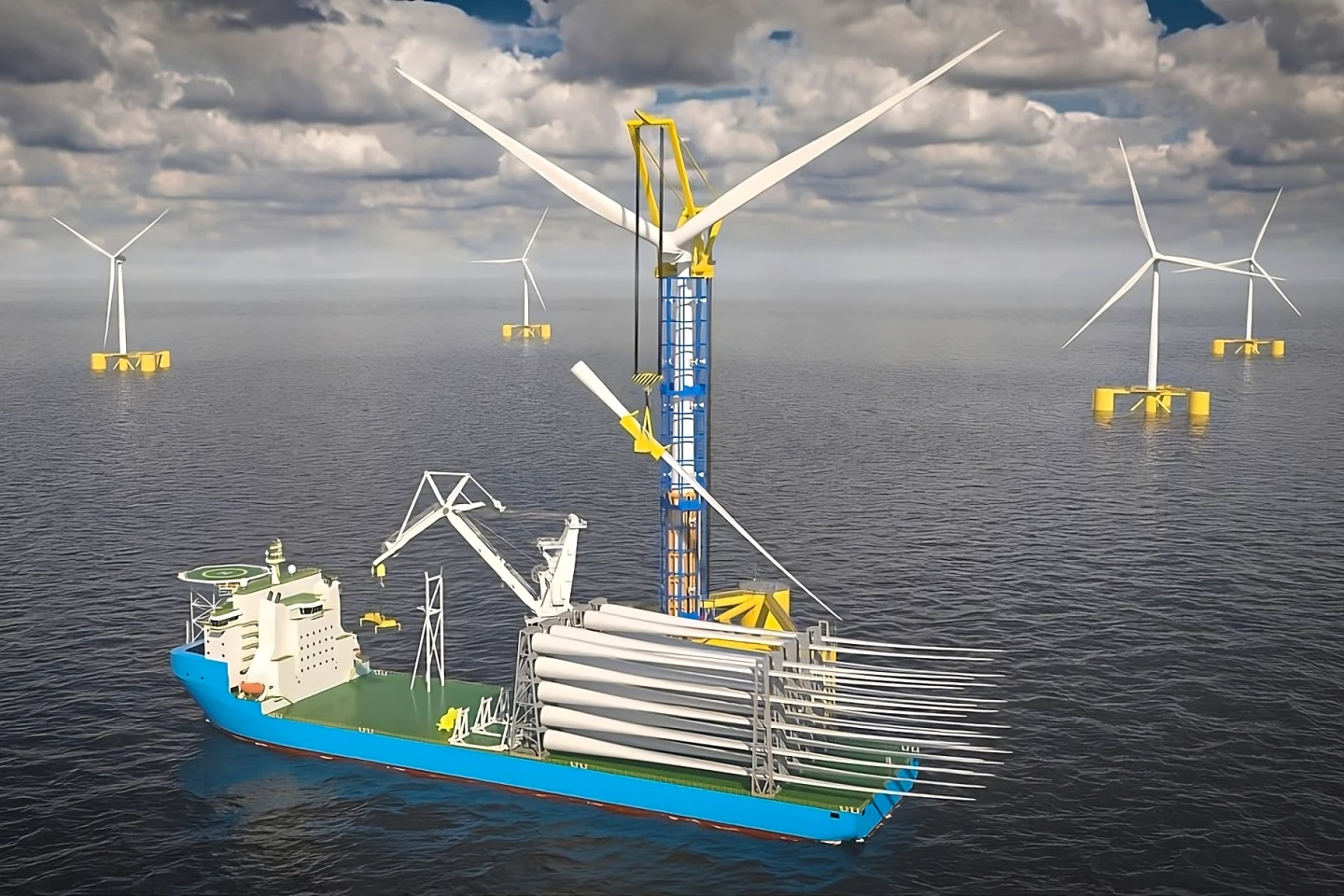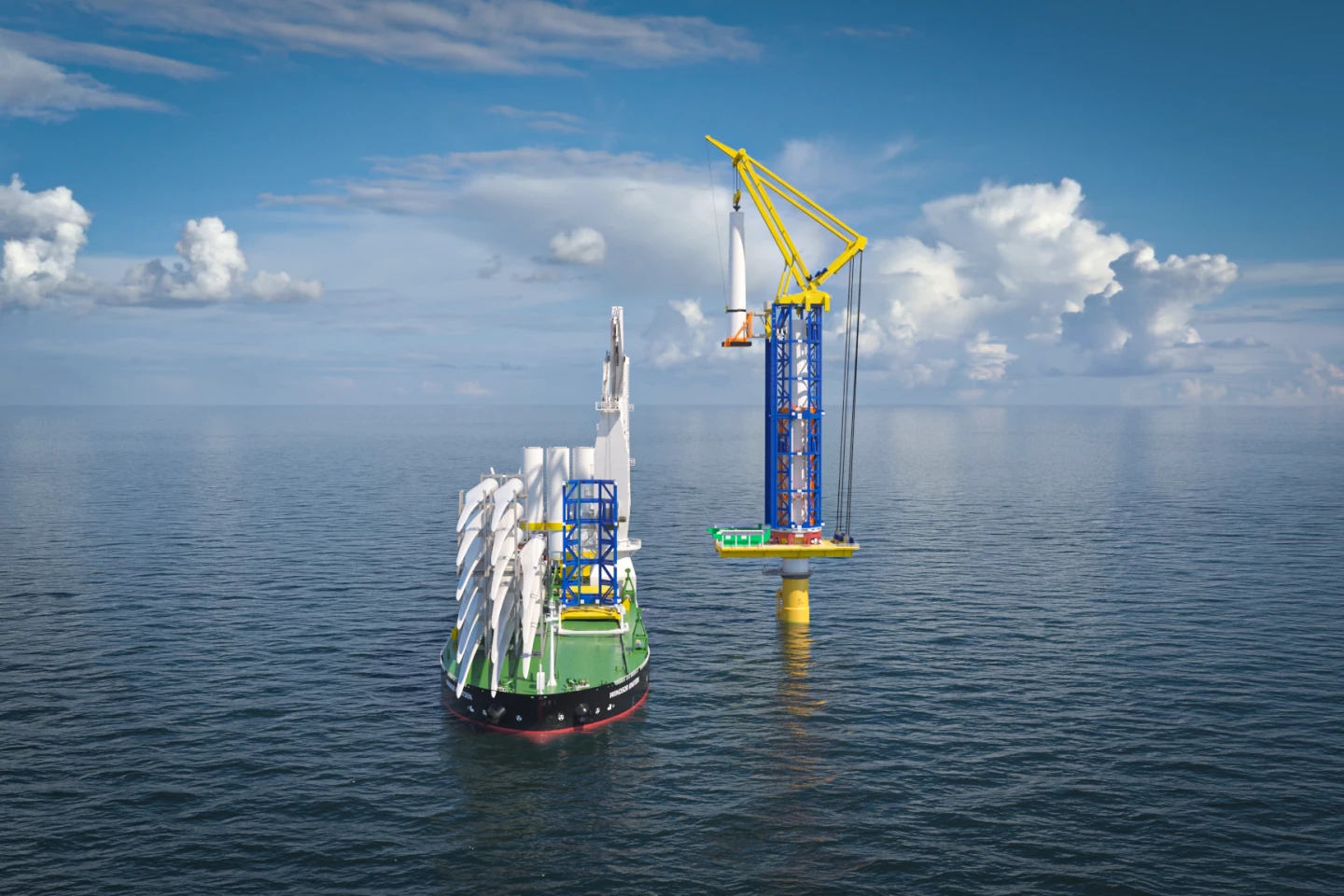Part of the exorbitant cost of offshore wind energy is the massive crane ships required to install the damn things – but Norwegian company Windspider has come up with a brilliantly lightweight crane system that promises to slash costs in half.
A new generation of offshore wind turbines is pushing scale to the absolute extremes; colossal towers, taller than some skyscrapers, with gargantuan generator nacelles on top supporting three blades long enough to sweep a diameter greater than 310 metres (1,017 ft)... We're talking about some of the biggest machines humans have ever built.
Lifting those gigantic generators and blades up to the top of the tower is an epic logistical challenge – doing it from a crane ship that's bobbing and floating in the waves puts a hefty bonus multiplier on the difficulty level. And considering that crane ships this big can cost millions a day... Well, you can understand why offshore wind still looks so expensive compared to other renewables.
The solution, according to a few innovative companies, is to more or less make these turbine towers act like their own crane bases. Last year, we looked at a few different "climbing cranes" that are starting to hit the market. You stick down one segment of a tower, then lift the climbing crane up so it can hug onto the side of the tower and lift the next segment on. Then, it shimmies up the next segment and grabs on again, ready to lift the next bit up. You can watch Enercon/Lagerway's LCC140 machine do its very cool thing in the video below.
There's another in the article linked above called the Koalalifter, which hugs the tower with great big straps to earn its adorable brand name. And Koalalifter is looking at deploying its idea in an offshore-focused model as well.
But another approach out of Norway has just attracted significant funding to go and get its first full-scale unit built. WindSpider has announced a deal with Leirvik Group AS, another Norwegian company that specialises in offshore aluminum structures.
The WindSpider solution is perhaps a bit less elegant than the climbing cranes, since it requires a separate aluminum exoskeleton of sorts to be built around the tower. But the cage-like segments of this scaffolding structure are relatively lightweight and simple to deal with, and the key advantage here is that they don't require the tower to be designed to handle an asymmetric weight hanging off to one side like the climbing cranes do; it'll work without any modifications to the regular turbine design.

On top of the scaffolding segments sits a heavy-lift crane, scalable to theoretically handle loads over 1,500 tonnes with no practical restrictions on how high they can get. The crane straddles the gap over the turbine tower, with enough width between its arms to lift and position the massive generator nacelle at the top.
Once that's in place, WindSpider has designed a separate "blade tool" that can grip individual turbine blades from the ship's deck, then attach to the side of the scaffolding structure, where it's able to climb up the side and precisely position the blades for installation into the generator hub – lifting these giant airfoils by crane in some of the world's windiest areas might otherwise prove tricky.
We're not entirely clear on whether WindSpider plans to just leave the scaffolding and crane in place once a turbine is built, or whether there's a process for removing it. Certainly, there's a separate "dolly crane" attachment, again designed to grab onto the side of the scaffolding cage and climb up the side – this time to allow removal and replacement of nacelle parts weighing up to 400 tonnes during maintenance operations.

The cage will need to be there for that to work, so maybe it'll just get left there, and the main lift crane will shimmy its way down to the bottom and lift itself back onto the ship – or maybe there's a way to remove the scaffolding segment by segment and take it to the next job site. That seems likely,
Either way, WindSpider is confident that the approach will scale to installation more than 200-m (656-ft) high, and says it'll reduce installation and maintenance costs for fixed-based and floating turbines alike by "more than 50%." That's no small line item to address in offshore wind, so this machine could make a significant contribution to renewable energy.
We look forward to seeing this spider in action!
Source: WindSpider








